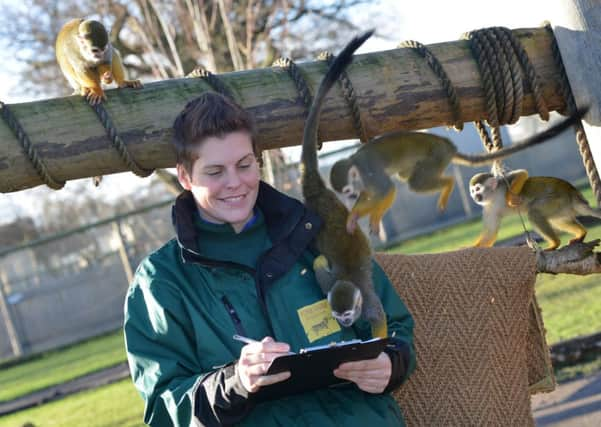See how Yorkshire Wildlife Park counts all creatures great and small


Park staff painstakingly count all their animals as part of the annual checks – from the education section’s hissing cockroaches to African painted dogs. Staff also take the opportunity to find out a little more about their stock.
As well as weighing and measuring the inhabitants, staff carefully note down other vital statistics such as the size of the tigers’ paws and the length of the meerkats’ tails.
Advertisement
Hide AdAdvertisement
Hide AdAccording to park director, Cheryl Williams, while it is the same concept as a storeroom stocktake “it is trickier when the stock is on the move”.
“It is a huge task and means a very busy start to 2014 during which some species present a challenge to our staff,” Ms Williams added.
The fact that this is an annual event at the park near Doncaster does not mean that staff only find out once a year if any wild animals have gone missing – there is a daily head count. The only figures they cannot be sure of are the wallabies, as joeys may be hidden in their mothers’ pouches.
The round-up is not just for the park to plan how much feed to order – it is also required by law under the Zoo Licensing Act.
Advertisement
Hide AdAdvertisement
Hide AdMs Williams said: “It is vital that the information is completely accurate as it is collected and shared into a global database of responsible zoos which participate in animal exchange programmes as part of conservation efforts.”
This global database contains information on over 1.65 million animals covering around 10,000 species across zoos in 72 countries. Last year the park had a record-breaking 435,000 visitors.